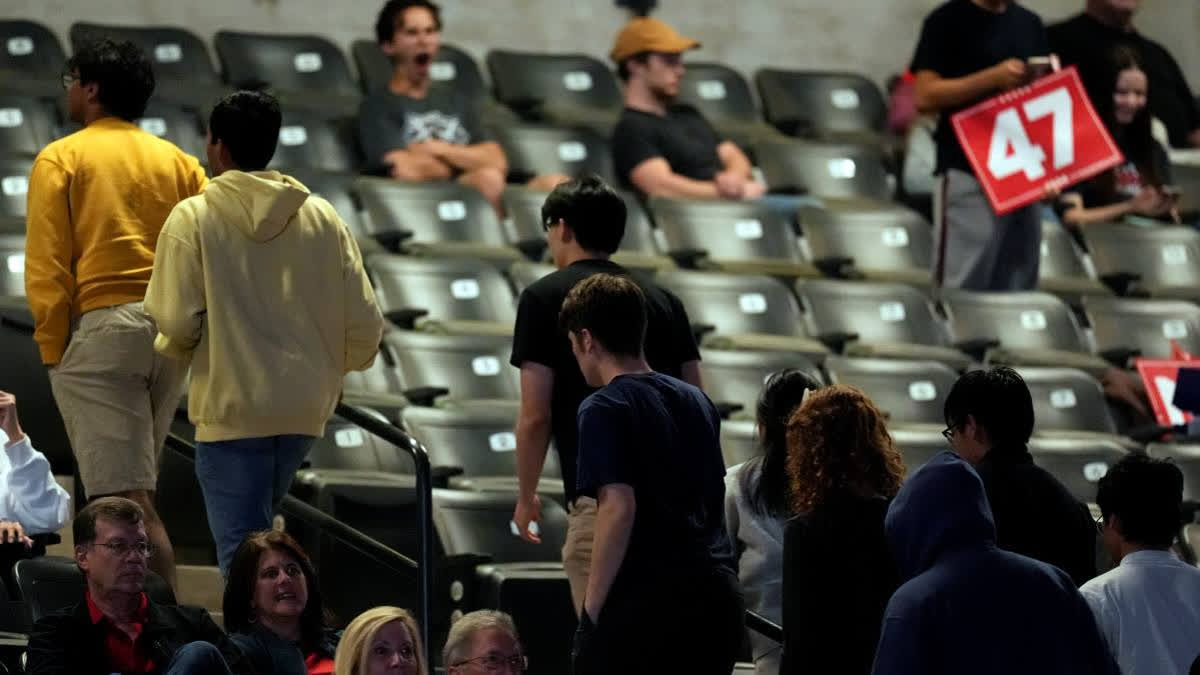Pittsburgh: Donald Trump has spent nearly a decade bragging about his crowds. Lately, he's been making the same boasts to swaths of empty seats.
In his third presidential bid, Trump for the first time is facing an opponent who stages her own massive rallies, calling further attention to the fact that his crowds, however enthusiastic they are, sometimes have failed to fill large venues and often thinned out as he spoke.
In North Carolina this weekend, the former president and Republican nominee spoke at First Horizon Coliseum in Greensboro, where the lower level of the 22,000-seat arena remained unfilled, with the upper level blocked off altogether.
"We've had the biggest rallies in history of any country. Every rally's full," he falsely claimed anyway. "You don't have any seats that are empty."
He began Monday, the eve of the election, in Raleigh, North Carolina, where a late-arriving crowd came close to filling the venue but left a smattering of empty seats. In Reading, Pennsylvania, Trump took the stage in Santander Arena, where there were sections of empty seats in the 7,200-seat arena. The campaign hung a large American flag near the back of the arena, blocking the view of several seating sections that remained unfilled.
He then went to PPG Paints Arena in Pittsburgh, where the upper level seating was again blocked off.
The former president's crowds still routinely number in the thousands and they roared regularly as he spoke. And his supporters this year remain engaged enough that his final event in Grand Rapids, Michigan, was inside a packed arena even though it started after 12:15 a.m. Tuesday, nearly two hours late. Some rallygoers told a reporter they arrived at 7 a.m. the day before.
But the occasional scenes of empty seats offered a notable contrast to Democratic nominee Kamala Harris' biggest events this fall — and to the volume and vibe of Trump's crowds eight years ago when he sought and won the presidency for the first time.
To be sure, crowd sizes aren't necessarily predictive of electoral outcomes. Still, Trump has been drawing smaller crowds in the closing stretch of the campaign than he did in previous races, especially his first campaign, when his mass events became a political phenomenon. Trump's crowds this fall also have often thinned out as the former president's long stump speeches extend into their second hour.
People routinely leave while he's speaking, sometimes in droves, after waiting several hours for a spot.
